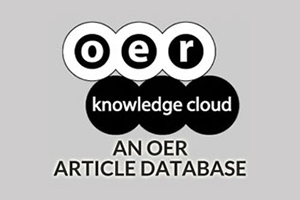Dialogue and connectivism: A new approach to understanding and promoting dialogue-rich networked learning
DOI:
https://doi.org/10.19173/irrodl.v12i3.934Keywords:
Theory, Dialogue, Design, Networked Learning, Pedagogy, Dialogue Games, computer mediated communicationAbstract
Connectivism offers a theory of learning for the digital age that is usually understood as contrasting with traditional behaviourist, cognitivist, and constructivist approaches. This article will provide an original and significant development of this theory through arguing and demonstrating how it can benefit from social constructivist perspectives and a focus on dialogue. Similarly, I argue that we need to ask whether networked social media is, essentially, a new landscape for dialogue and therefore should be conceived and investigated based on this premise, through considering dialogue as the primary means to develop and exploit connections for learning. A key lever in this argument is the increasingly important requirement for greater criticality on the Internet in relation to our assessment and development of connections with people and resources. The open, participative, and social web actually requires a greater emphasis on higher order cognitive and social competencies that are realised predominantly through dialogue and discourse. Or, as Siemens (2004) implies, in his call to rethink the fundamental precepts of learning, we need to shift our focus to promoting core evaluative skills for flexible learning that will, for example, allow us to actuate the knowledge we need at the point that we need it. A corollary of this is the need to reorient educational experiences to ensure that we develop in our learners the ability “to think, reason, and analyse.” In considering how we can achieve these aims this article will review the principles of connectivism from a dialogue perspective; propose some social constructivist approaches, based on dialectic and dialogic dimensions of dialogue, which can act as levers in realising connectivist learning dialogue; demonstrate how dialogue games can link the discussed theories to the design and performance of networked dialogue processes; and consider the broader implications of this work for designing and delivering sociotechnical learning.Published
How to Cite
Issue
Section
License
This work is licensed under a Creative Commons Attribution 4.0 International License. The copyright for all content published in IRRODL remains with the authors.
This copyright agreement and usage license ensure that the article is distributed as widely as possible and can be included in any scientific or scholarly archive.
You are free to
- Share — copy and redistribute the material in any medium or format
- Adapt — remix, transform, and build upon the material for any purpose, even commercially.
The licensor cannot revoke these freedoms as long as you follow the license terms below:
- Attribution — You must give appropriate credit, provide a link to the license, and indicate if changes were made. You may do so in any reasonable manner, but not in any way that suggests the licensor endorses you or your use.
- No additional restrictions — You may not apply legal terms or technological measures that legally restrict others from doing anything the license permits.







